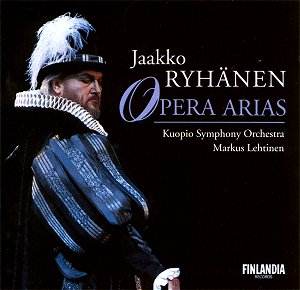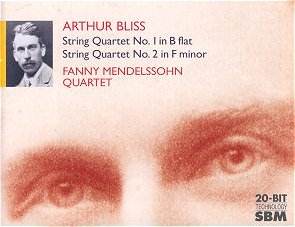 Composer: Wolfgang Amadeus Mozart, Gioacchino Rossini, Giuseppe Verdi, Richard Wagner, Jonas Kokkonen, Piotr Ilych Tchaikovsky, Modest Mussorgsky
Composer: Wolfgang Amadeus Mozart, Gioacchino Rossini, Giuseppe Verdi, Richard Wagner, Jonas Kokkonen, Piotr Ilych Tchaikovsky, Modest Mussorgsky
Works: Don Giovanni: Madamina, Die Entführung aus dem Serail: Ha, wie will ich triumphieren, Die Zauberflöte: O Isis und Osiris, In diesen heil’gen Hallen; Il Barbiere di Siviglia: La calunnia è un venticello; Don Carlos: Ella giammai m’amò; Macbeth: Studia il passo Come dal ciel precipita; Simon Boccanegra: A te l’estremo addio; Der fliegende Holländer: Mögst du mein kind; The Last Temptations: Paavo’s “Fisherman Monologue”; Eugene Onegin: Gremin’s aria; Boris Godunov: Prologue (Coronation Scene), Death Scene (Act IV)
Performers: Jaakko Ryhänen (bass), Tampere Opera Choir, Kuopio Symphony Orchestra/Markus Lehtinen
Recording: Recorded 15-18.5.2001, Kuopio Music Centre
Label: FINLANDIA 8573-87779-2
Jaakko Ryhänen, a stalwart of the Finnish National Opera and a prominent figure in the world of bass singing, presents a compelling compilation of opera arias in this release. The selection spans from the Classical to the Romantic periods and features a mix of familiar and lesser-known pieces that showcase both the breadth of his repertoire and the depth of his vocal prowess. This album serves as a testament to Ryhänen’s long-standing commitment to opera, particularly in a landscape increasingly dominated by fleeting engagements and star-driven performances.
The recording opens with Mozart’s “Madamina” from Don Giovanni, a piece that demands both vocal agility and dramatic flair. Ryhänen’s interpretation is solid, though it tends to lack the mischievous sparkle that characterizes the best renditions of this aria. His lower register resonates with authority; however, the upper tessitura appears somewhat constrained, limiting the expressive range. Similarly, in “O Isis und Osiris,” the serene beauty of the line is marred by a lack of fluidity in the phrasing. Ryhänen’s performance is competent, yet it does not fully capture the ethereal quality inherent in Mozart’s writing.
Transitioning to Rossini’s “La calunnia è un venticello,” one senses a shift in energy. Here, the light-heartedness and wit of the aria are somewhat stifled by Ryhänen’s robust delivery. While the coloratura passages are executed with precision, there is an unfortunate tendency for the text to become obscured, particularly as the tempo accelerates. This raises questions about diction and enunciation; the words seem to dissolve into the richness of the voice, reminiscent of some of the challenges faced by larger basses in similar repertoire.
Verdi’s characters offer a more natural fit for Ryhänen’s vocal identity. His portrayal of Gremin in Eugene Onegin and the haunting gravity of “Ella giammai m’amò” resonate well, showcasing his ability to convey deep emotional currents through a commanding vocal presence. The “A te l’estremo addio” from Simon Boccanegra reveals a darker, more introspective side, with Ryhänen delivering the line with a sense of tragic weight that is compelling, even if it lacks the searing intensity that a singer like Boris Christoff might convey.
The recording quality merits praise, as the Kuopio Symphony Orchestra, under Markus Lehtinen’s baton, provides a lush and supportive backdrop. The engineering captures the warmth of Ryhänen’s voice while allowing the orchestra to breathe, creating a balanced sound that enhances the listening experience. The inclusion of texts in multiple languages is a thoughtful touch for the listener, facilitating deeper engagement with the music.
As the disc progresses, the works of Kokkonen and Mussorgsky provide an intriguing contrast, with Ryhänen adapting seamlessly to the unique demands of each composer. The “Fisherman Monologue” from Kokkonen’s The Last Temptations is particularly noteworthy, revealing Ryhänen’s ability to navigate contemporary idioms while maintaining his characteristic depth and resonance. Mussorgsky’s “Coronation Scene” and the subsequent Death Scene encapsulate the dramatic potential of his voice, though there are moments where the urgency of the music is not fully realized.
A complete assessment of this recording acknowledges the strengths and shortcomings of Ryhänen’s interpretations. His voice is undeniably rich and authoritative, particularly in the more dramatic and lyrical passages, which should appeal to opera enthusiasts looking to explore the bass repertoire. However, some interpretive choices, especially in faster, more intricate works, may leave listeners desiring a more nuanced approach. Ryhänen’s legacy as a significant performer is clear, yet this recording serves as a reminder that even established artists must continually strive for vocal clarity and dramatic engagement across a diverse operatic landscape.



